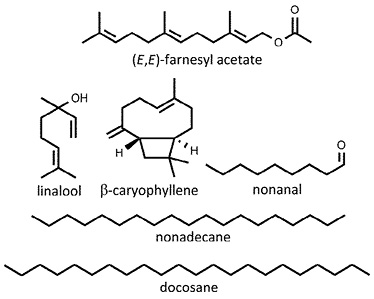 Sanguisorba minor
Sanguisorba minor
salad burnet
Back to “Salad herbs and herb mixtures: salad burnet (Sanguisorba minor)”
Back to “Culinary herbs: salad burnet (Sanguisorba minor)”
Sanguisorba minor Scop. (= Poterium sanguisorba L.) (Rosaceae); pimpernel (Afrikaans); pimprenelle (French); Bibernelle, Pimpinelle, Kleiner Wiesenknopf (German); pimpinella (Italian)
DESCRIPTION The leaves are pinnately compound and fern-like – bright dark green above, paler below, with several pairs of toothed leaflets. They have a cucumber-like, nutty taste.
THE PLANT A small, perennial, rosette-forming herb with globose heads of tiny wind-pollinated florets. Salad burnet should not be confused with the much taller Eurasian great burnet (Sanguisorba officinalis) or the North American bloodroot (S. canadensis).
ORIGIN Indigenous to central and southern Europe.1 Dried rhizomes and roots (and those of S. officinalis) have a long history in Europe and China as first aid treatment for wounds and to stop bleeding. The generic name is derived from sanguis (blood) and sorbeo (absorb). Salad burnet seems to be making a comeback as a popular indigenous culinary herb in Europe.
CULTIVATION In herb gardens, salad burnet is often seen as a decorative edge plant along paths. Seeds are sown in spring or plants can be multiplied by division of mature specimens. Almost any soil conditions are suitable, and the plants adapt to cold, drought, full sun or partial shade.2 Regular but sparse feeding and watering will ensure that the plants do not become too vigorous and lose their flavour.2 It is an excellent container plant for those who have no space for a herb garden.
HARVESTING The main advantage of salad burnet is that it is an evergreen perennial that provides a supply of fresh leaves almost throughout the year. Regular harvesting of leaves and cutting back of the flowering stalks as they emerge will ensure that the plants stay in a vegetative growth phase.2 Leaves do not dry well and are best used fresh.
CULINARY USES Salad burnet can be used in much the same way as parsley – an attractive and edible garnish to decorate salads, soups and casseroles but also ideally suited as the main ingredient, in generous amounts. It can be added to cream cheeses and is used to make herb butter and herb vinegar.3 Leaves can also be used in cold drinks with a result similar to that of borage.3 French cooks use salad burnet in the same way as watercress – for salads, soups, cold sauces, marinades and omelettes.3
FLAVOUR COMPOUNDS The essential oil is dominated by linalool, accompanied by small amounts of β-caryophyllene.4 Volatile compounds responsible for the refreshing green flavours include nonanal, (E,E)-farnesyl acetate, nonadecane and docosane.4

NOTES The styptic and antibiotic activity of Sanguisorba species can be ascribed to tannins, visible as red, blood-like exudate when the rhizomes are cut. North American bloodroot (S. canadensis) is traditionally used as an antiseptic, spasmolytic and expectorant, and as a war paint and natural dye.5
1. Mabberley, D.J. 2008. Mabberley’s plant-book (3rd ed.). Cambridge University Press, Cambridge.
2. McVicar, J. 2007. Jekka’s complete herb book. Kyle Cathie Limited, London.
3. Larousse. 1999. The concise Larousse gastronomique. Hamlyn, London.
4. Esmaeili, A., Masoudi, Sh., Masnabadi, N., Rustaiyan, A.H. 2010. Chemical constituents of the essential oil of Sanguisorba minor Scop. leaves, from Iran. Journal of Medicinal Plants 35: 67–70.
5. Harborne, J.B., Baxter, H. 2001. Chemical dictionary of economic plants. Wiley, New York.